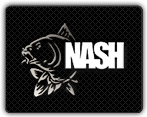
Following on from the success of their original zig bugs, the guys at Nash Tackle have come up with a hookless idea called Zig Bug Critters and the general buzz is that these are going to catch a LOT of carp in 2013!
Zig Critters are not tied to a hook, but to a ring, allowing a variety of mounting permutations. The small ring allows you to hair rig the critter exactly how you wish with the hook pattern of your choice.
This makes them extremely versatile, allowing them to be used with a variety of rig presentations. It also means that the choice of barbed or barbless hooks lies with you, the angler.

There are three in the pack, designed to mimic natural food that a carp would see every day. Try to ‘match the hatch’ by fishing them as ‘naturally’ as possible. The three different designs in each pack are:
Corixa
Commonly known as the lesser water boatman, these bottom dwelling bugs are active throughout the year and can be seen periodically surfacing to replenish their air supplies.
Still or slow – moving water are their preferred habitat. In deep water they are confined to the shallow margins and are rarely found in water deeper than 2 metres.
Hawthorn
These are the first of the terrestrial insects to be of interest in the angler’s year. The smaller males start hatching in mid-April, followed by the larger females a week or 2 later. The hatch is generally over by mid May.
On sunny April days they can be seen flitting along hedgerows and low bushes, especially on upland streams and lakes – many of which end up blown onto the water
Sedge
Sedge flies, also known as caddis flies, are a small moth like fly with two pairs of hairy membranous wings, which when resting are held along the body in the form of a ridge tent. A characteristic of sedges is the long antennae, in many species double the body length.
They are found in all sorts of waters, from lowland ponds and gravel pits, to mountain torrents and moorland lakes.
Sedge flies begin life as a caterpillar – like larvae commonly called caddis grubs, the majority of which live in portable cases made from vegetable matter and gravel found on the bed of the stream or lake. When the adult is fully developed inside the case, the insect bites it way out of the end of the case and swims up to the surface. The adult sedge returns to lay their eggs on moonlit nights.
Available from all good Nash stockists, with a RRP of just £3.99 a pack, we reckon these should be in every carp angler’s tackle bag this season!




















